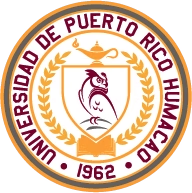
University of Puerto Rico at Humacao
Last updated on May 24, 2025
Grant awarded by
Region
Organization Type
Congressional District(s)
Fiscal Year Of First Grant
Contributing Organization(s)
Organization description
The University of Puerto Rico at Humacao (UPRH), founded in 1962, is an undergraduate public institution classified as Bachelor/Diverse: Baccalaureate Colleges-Diverse Fields by the Carnegie Foundation for the Advancement of Teaching. UPRH is one of eleven units that make up the state system of the University of Puerto Rico (UPR) and has been accreditable since 1965, with an operating license from the Puerto Rico Council of Education (Renewed in 2017). It is located in the eastern region of the Island, 30 miles southeast of San Juan, the capital of Puerto Rico. UPRH is situated in 60 acres of land, with 30 buildings totaling an occupation area of 395,755 square feet. Two of these building are located off-campus: Casa Roig Museum and Casa Roig Annex. The institution also has a theater, three amphitheaters, an athletic field, and a sports complex. Eighty-eight percent of the total enrollment comes from 16 adjacent municipalities surrounding the town of Humacao. However, the service area consists of the 78 municipalities on the Island. UPRH is the only campus of the UPR System with a presence in the eastern region of Puerto Rico, positioning it as a vital component of the economic and social development of this geographical region. Seventy-three percent of incoming students come from the public schools, demonstrating the need for a public institution of higher education so that students can continue undergraduate studies.
UPRH offers 24 academic programs, of which 20 lead to baccalaureate degrees and 4 to associate degrees. Among the 24 academic programs, six are unique to Puerto Rico: Wildlife Management, Coastal Marine Biology, Physics Applied to Electronics, Computational Mathematics, Social Sciences with Social Action Research, and Studies in Puerto Rico and the Caribbean. Furthermore, three programs are unique within the UPR system: International Business, Industrial Chemistry, and Occupational Therapy. Lastly, the Division of Continuing Education and Professional Studies (Decep) offers articulated programs within the university system, short courses, degree-credit programs, and professional certifications.
Project description
TPS project focus
- Curriculum
- Teaching Materials
- Workshops
Content focus
- Access
- English Language Arts
- History
- Research
Audience
- Classroom teachers
- Community members
- Students
- Teacher candidates/Student teachers
- University faculty
Level(s)
- 6 - 8
- 9 - 12
Population focus
- English language learners